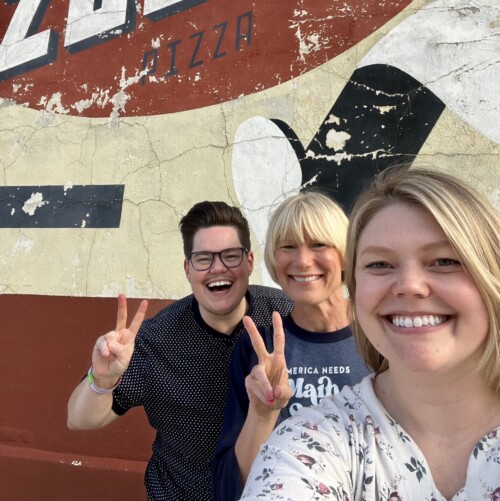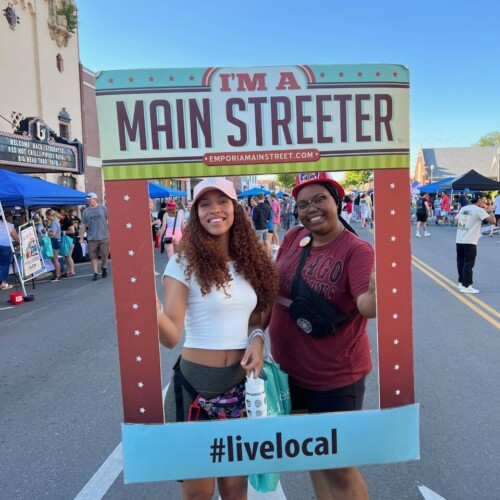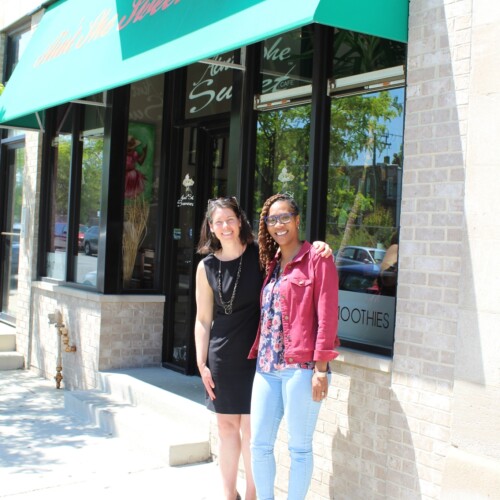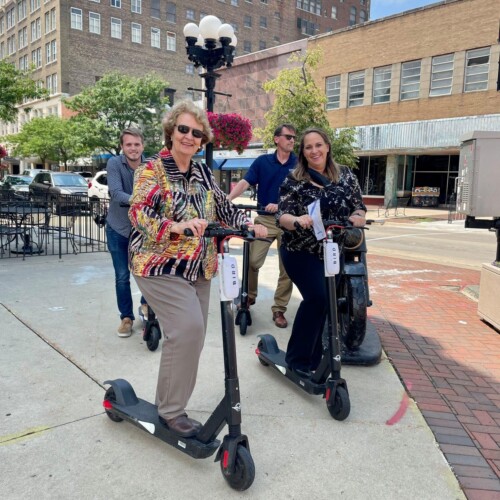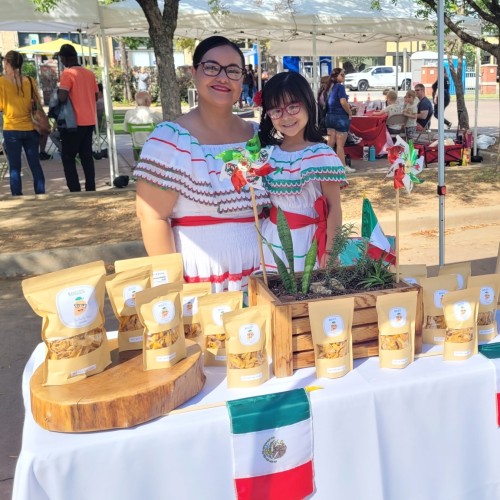July 23, 2020 | Main Spotlight: The ADA at 30: The Power of Inclusion on Main Street | By: Steve Wright, Disability Rights Advocate | 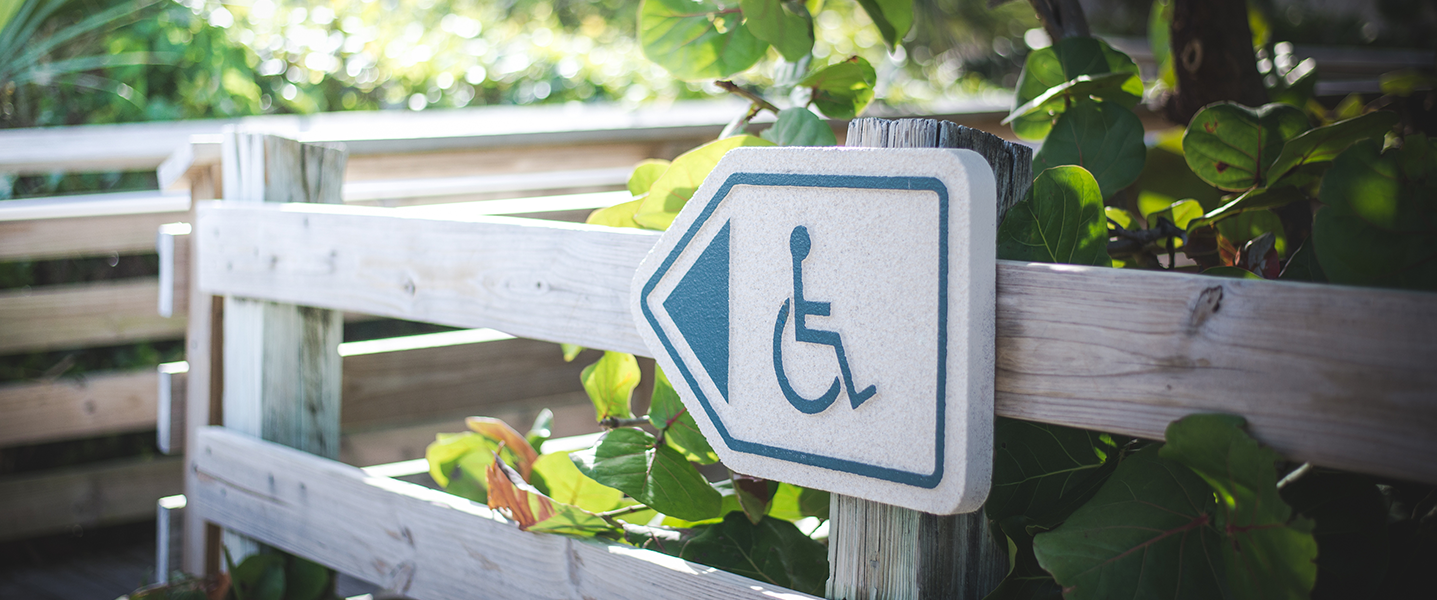
I adore main streets, historic districts, restaurant rows, quirky corridors and all the unique urban flavor they deliver with mom and pop shops, sidewalk cafes, scratch bakeries, used bookstores, restaurants, beautiful architecture and other unique experiences that are far from cookie cutter any town.
When I’m on Main Street, I also demand wheelchair access – on wide, unobstructed sidewalks, along safe crosswalks, through easily-accessible doorways, around the shelves at shops, at tables in different areas of restaurant and in the restroom. The sad thing is most of the charming urban corridors, the main streets, were built long before people thought about a built environment that included wheelchair users, people with other assistive mobility devices as well as folks with visual, hearing, or cognitive impairments.
I wrestle with issues each day. Do I patronize the used book shop, even though the piles of dusty design books block the path of my wife’s wheelchair? Do I boycott the coffee house in an old building up a few steps from the sidewalk? Do I settle for delivery from the hip, eclectic restaurant because it’s in an old building with a restroom downstairs and no elevator to accommodate my wife? There are no quick and easy answers.
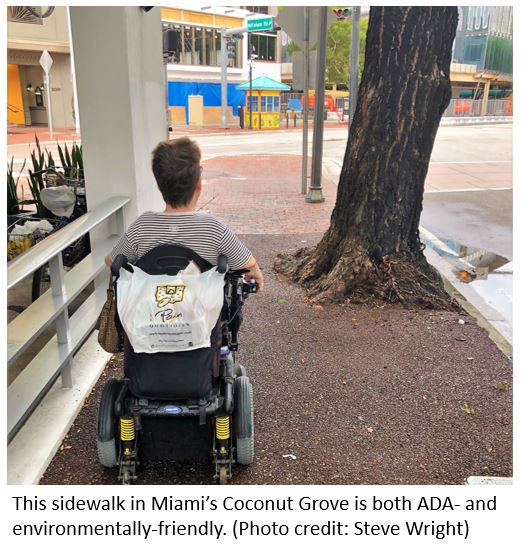 The ADA turned 30 this year (July 26 is the specific date), but sadly, people with disabilities are still experiencing ableism. I’ve published quite a few essays that are calls to action for developers, landlords, tenants, architects, planners, engineers, remodelers, business improvement districts, development authorities and main streets organizations to remove barriers and join the world of universal design. That means design not done for pure ADA compliance, but rather is done in a way everyone from 8 to 80 can be comfortable with. It is achieved using ramps and topography, building fresh sidewalks and curb cuts and incorporating accessible restrooms, thresholds and maneuverability into capital improvements.
The ADA turned 30 this year (July 26 is the specific date), but sadly, people with disabilities are still experiencing ableism. I’ve published quite a few essays that are calls to action for developers, landlords, tenants, architects, planners, engineers, remodelers, business improvement districts, development authorities and main streets organizations to remove barriers and join the world of universal design. That means design not done for pure ADA compliance, but rather is done in a way everyone from 8 to 80 can be comfortable with. It is achieved using ramps and topography, building fresh sidewalks and curb cuts and incorporating accessible restrooms, thresholds and maneuverability into capital improvements.
During the time of COVID, there are additional concerns as cities relax restrictions on streets and sidewalk use. It’s imperative to make sure to keep sidewalks accessible if your main street’s restaurants are expanding outdoor dining service due to a ban on indoor service.
Even if part of the street is marked off for pedestrians, how can a wheelchair user make it up the curb midblock? Even with a temporary ramp, my wife cannot get to the pharmacy next to you or the grocery on the other side if tables are blocking the sidewalk. And no, it’s not okay to make diners jump away from their tables to make way for the wheeler.
Here’s another tip: restaurants should provide accessible tables. If there the pavement is wide enough to put tables on, providing only picnic tables or high-top tables is not adequate. Businesses need to provide plenty of regular height tables with leg room underneath. Also, please help educate your businesses that one lowered “special” table for “special needs” is not enough.
Here’s another path to accommodating all that doesn’t cost a cent. Make sure bus, train and circulator stops are free of clutter that would block wheelchair access. Work with transport engineers to ensure that electrical boxes for streetlights are not creating barriers on sidewalks.
Street furniture is great, but make sure benches, wastebaskets and bike racks are not creating a barrier to pedestrians, especially those who use assistive mobility devices. Dockless bikes and scooters can be a great boost to walkability and first/last mile mobility. But be sure to heavily regulate how they are used and where they are parked. Otherwise, bikes and scooters pose literal barriers when they block sidewalks and passageways -- denying basic civil rights under the ADA.
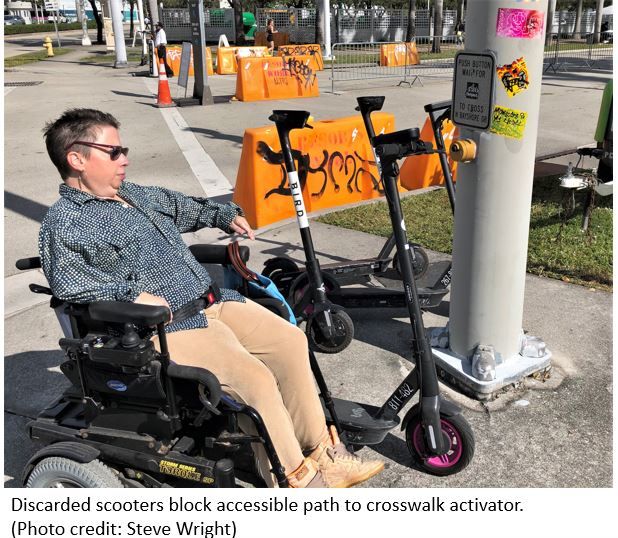 Even during boom times, small businesses are not flush with corporate cash to throw at major building upgrades. But a lot of main streets feature old buildings that require 40-year recertification as well as major roof, HVAC, plumbing, and electrical upgrades. Inclusive design easily be incorporated into that work. It would cost dimes on the dollar when folded into other renovations.
Even during boom times, small businesses are not flush with corporate cash to throw at major building upgrades. But a lot of main streets feature old buildings that require 40-year recertification as well as major roof, HVAC, plumbing, and electrical upgrades. Inclusive design easily be incorporated into that work. It would cost dimes on the dollar when folded into other renovations.
Further, spending money to create inclusive spaces makes sense for businesses because it can helps capture a bigger market segment. The CDC says upwards of one in four people will experience some level of disability in their lifetime. I know small businesses that spend tens of thousands of dollars on marketing plans aimed at capturing less than five percent of a new market segment. And it’s money well spent. Now, imagine capturing the many billions of dollars of disposable income within the disability community – which includes their spouses, children, parents, friends, caregivers, healthcare professionals and colleagues.
So, why not ask city leaders to sweep wheelchair access into capital improvements, help your small businesses apply for mom and pop grants to build ramps, and encourage landlords to install elevators? Push your city, your CRA, your county transit system, your state DOT, your self-taxing district to fund wider sidewalks, safe crosswalks, accessible train/bus stops and on street accessible parking.
It’s sound business practice. It’s an egalitarian use of tax dollars. It’s sustainable and resilient. It will produce a great return on investment – simply by being welcoming to all.
About the Author
Steve Wright (@stevewright64) is a writer, disability rights activist and marketer of design services. He has 35 years of expertise in planning for the built environment. His byline has appeared in hundreds of newspapers, magazines and online publications. Based in Miami, he blogs daily at: http://urbantravelandaccessibility.blogspot.com/
#TakeBackLocal.
#People Management and Work Planning
